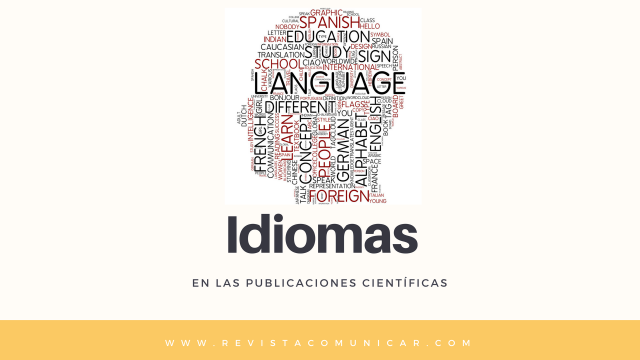Author: Ángel Torres – Translation: Erika-Lucia Gonzalez-Carrion

The visibility and impact of scientific publications is not only guaranteed by the reputation of the institution that hosts them, the editorial companies that support them or their location within the different indexations and international rankings. These are undoubtedly an important indicator, although they do not guarantee even though their originals are accessible to the entire scientific community.
A publication that is only available in one language (Spanish, French, German, Russian …) will only be understandable for the academic community with sufficient language skills in that language. For example, according to Thomson Reuters®, only 6% of researchers worldwide publish articles in Spanish, less than 1% in Arabic, compared to 79% in English.
In this sense, a magazine that makes available its articles in at least two languages – one of them necessarily being English -, exponentially increases its scope and visibility, ergo possibilities of reading and citation, which is ultimately one of the main interests of all journals: Provide a high-level discussion space that is visible to other members of the academic community. Likewise, bilingual and multilingual publications will attract more and better research, which will result proportionally in the quality of the publication.
On the other hand, publications that are available in two or more languages can be read by more people and contribute to improving the dissemination of scientific knowledge as a source of possibilities for the development of societies, providing added value of availability of access to knowledge to public, private, nongovernmental institutions, associative and community fabrics, and, ultimately, society as a whole.
Comunicar, for example, has all its articles published in Spanish – its mother tongue – and English – free language of the research; but in addition to increasing its visibility and academic SEO, it offers the titles, abstracts and keywords in Portuguese and Chinese, which extends the visibility of the magazine in other areas and contexts. Likewise, with the same vision of increasing reach, Comunicar also has blogs in Spanish, Portuguese and English, with general social and academic multilingual networks and with a School of Authors in Spanish and English.
In short, although the English language has monopolized scientific publications almost 95% and has become a lingua franca of research, this does not mean that the native languages of each journal are not defended, since the publications are due first to their own community. However publishing in at least two international scientific recognition languages ensures better dissemination and visibility of authors, research and publication.
